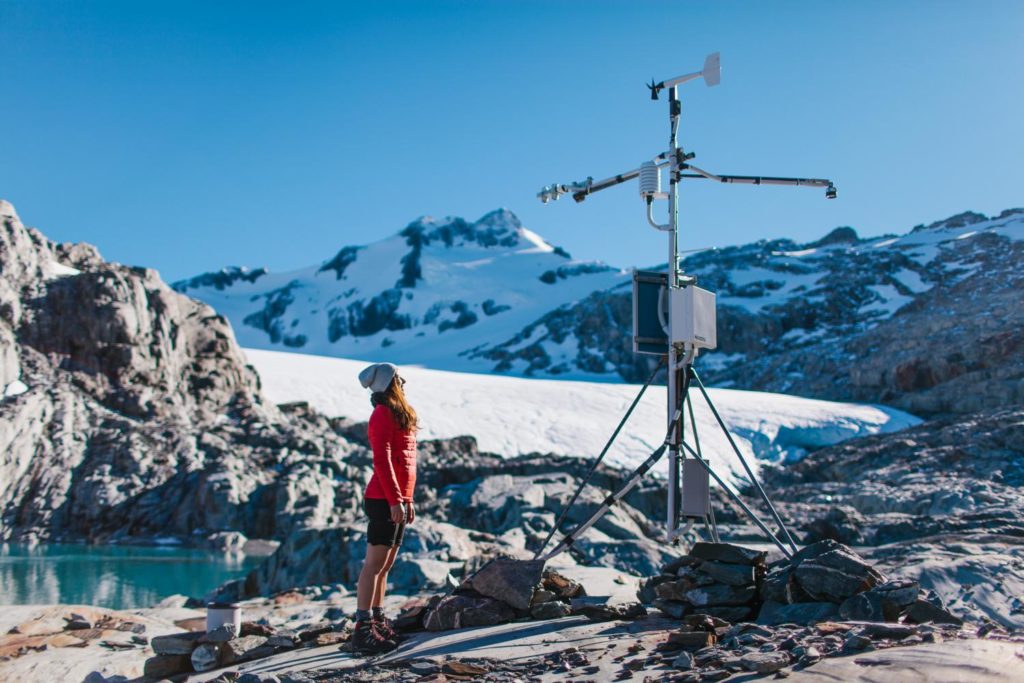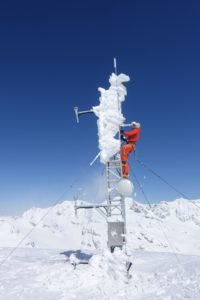Understanding climate change
FAU climate scientists conduct research in the world's most inhospitable places
The speed at which the climate is changing varies across the world, but in some areas it is changing at an alarming rate. For example in the ‘cold regions’, in other words cold, glacial zones such as the mountain ranges in New Zealand, the mountains in Africa or the glaciers in Patagonia. Often, however, the general public lacks an understanding of why research should be carried out in areas such as these that are so far away from Germany and Europe and are not directly related to the climate on our own doorstep.
Dr. Thomas Mölg, professor for climatology at FAU explains why it is often the most inhospitable regions of the world that are the most interesting for research: ‘The cold regions and their glaciers have a decisive impact on the water resources of our entire planet. Processes in these regions are significant for the global climate and the changes it is undergoing, not only locally but also in Europe.’
The climate system
These are the processes Thomas Mölg and his team want to understand in more detail. Climate research is based on the investigation of the workings and mechanisms of the ‘climate system’. An understanding of these fundamental issues is crucial if we are to calculate future climate change or predict the consequences for the environment and the human race.
The cold regions lend themselves particularly well to research into these mechanisms as in these areas the various components contributing to the climate – the atmosphere, the oceans, and the areas covered in ice known as the cryosphere – are closely intertwined.

. the automatic weather station below the glacier at an altitude of 1650 metres. (Image: Chris Garden, University of Otago)
One region in which the three components are perfectly linked is in the high mountain ranges of New Zealand. The small size of the country and its location on the Southern Hemisphere, where there is less land mass than on the Northern Hemisphere, mean that glaciers, the atmosphere and the ocean are all in close proximity. This is extremely interesting when researching future climate change. Whilst our weather depends on short-term changes to our atmosphere, climate is a more long-term phenomenon in which oceans have a major role to play. The impact of these changes can be observed directly in the glaciers in the vicinity.
Observing all three components, the glaciers, the ocean and the atmosphere, over a number of years very quickly provides huge quantities of data on factors such as temperature, precipitation or wind speeds. The interaction between these factors and their impact on the climate is extremely complex. In order to calculate the relevant climate models, Thomas Mölg and his team rely on collaboration with their colleagues from the Department of High Performance Computing at the Erlangen Regional Computing Centre (RRZE) which is part of FAU. In spite of using high-performance computers, it can still take weeks or even months to fully calculate all the details of one single model.
‘The data we gather on location, for example at automated weather stations, are particularly important when it comes to assessing the climate models,’ explains Thomas Mölg. ‘We can verify whether the models deliver the same results as those we have observed on the ground. This allows us to challenge our models and continue to improve them even further with the aim of predicting the climate of the future more accurately.’
Another cold region where FAU researchers are carrying out research is in the high mountains of Africa such as Mount Kenya or Kilimanjaro. These mountains are some of the few regions in the tropics where snow falls. And the tropics are where the strongest mechanisms causing climate variability are at work, in other words fluctuations in the long-term average such as the well-known El Niño phenomenon. These fluctuations can be observed in the snowfall patterns on the high tropical mountains by tracking the amount of snow that falls over a certain period. This then allows the relevant climate models to be verified and made increasingly accurate.

However, not all cold regions are in distant lands. Thomas Mölg is pursuing an extremely important project together with researchers from Universität Innsbruck at the Hintereisferner glacier in the Oetztal Alps in Tirol. The researchers hope their open-air laboratory will help them gain a better understanding of snowdrift, when snow is blown from one area to another, and its impact on the ice mass of surrounding glaciers. The numerous variables involved, such as wind speed and air temperature, render the phenomenon very difficult to understand and it has only rarely been incorporated into climate models as a result. Its importance ought not to be underestimated, however, as over the long term it contributes to glaciers both losing and gaining ice mass, thereby potentially affecting the climate in the immediate surroundings and beyond. The good infrastructure in the region makes the Hintereisferner glacier an ideal location for research. ‘We shouldn’t forget that we are generally faced with hostile conditions in the cold regions of the world. They are not areas where people can spend a lot of time,’ explains Thomas Mölg.
The importance of understanding snowdrift better becomes apparent when we take a closer look at the glaciers in Patagonia. Patagonia is located in the Southern hemisphere, on the Antarctic Circumpolar Current, where frequent storms make the phenomenon particularly pronounced. As there is very little land mass on the Southern Hemisphere compared to the Northern Hemisphere, winds meet with little resistance. The melting of the Patagonian glaciers is currently one of the major factors contributing to the global rise in sea levels. It is therefore extremely important to understand snowdrift and be able to simulate it in models in order to calculate future changes in sea level. Researchers are very lucky to be able to refer to the data gained from the Hintereisferner glacier in the Alps, as the relevant regions in Patagonia are extremely inaccessible.
Like the projects of Thomas Mölg and his team, all aspects of the global climate and climate change are inextricably linked. We can only assess the potential far-reaching consequences and their impact if we understand all the details.
Calculating for research

The research team led by Thomas Mölg develops computer models that break down global climate to the regional level, using high performance computing (HPC). This makes it possible to tackle challenges that would exceed the limits of a normal computer. A computer like the one at the Erlangen Regional Computing Centre (RRZE) used by Mölg and his team takes approximately one week to complete a task a conventional home computer would take several decades to cope with. This valuable resource is available to all researchers at FAU. An automated resource allocation system ensures fair access. For Thomas Mölg, the high performance computing resources were definitely a factor that swayed his decision to come to FAU. Capacities are growing even further, with the Erlangen National High-Performance Computing Centre (NHR@FAU) due to be established at RRZE on 1 January 2021. It is part of a funding initiative in which the Federal and regional German governments will provide a total of 625 million euros in funding over an initial period of ten years in order to establish eight national centres. Currently, NHR@FAU is preparing to install a new super computer that is approximately ten times more powerful than the systems currently available in Erlangen. Part of the new computer will be located directly in the cooling facility at the Faculty of Sciences in order to be as energy efficient as possible. Plans are already underway for the construction of a completely new, highly energy-efficient computing centre at FAU.
About the author
Sebastian Teichert researches and teaches at the GeoCentre Northern Bavaria at FAU on Arctic biodiversity, palaeontology and environmental change. At the same time, as an enthusiastic science communicator, he writes journalistic articles on topics related to his research, which are published in friedrich and alexander, among others.
FAU research magazine friedrich

This article first appeared in our research magazine friedrich. You can order the print issue (only available in German) free of charge at presse@fau.de.
All articles
